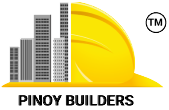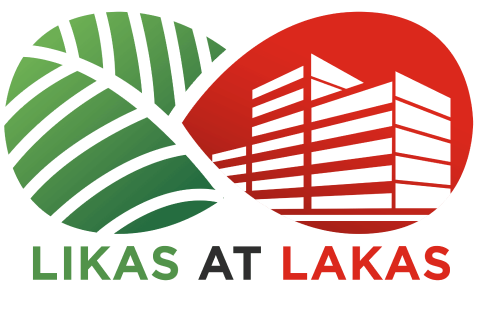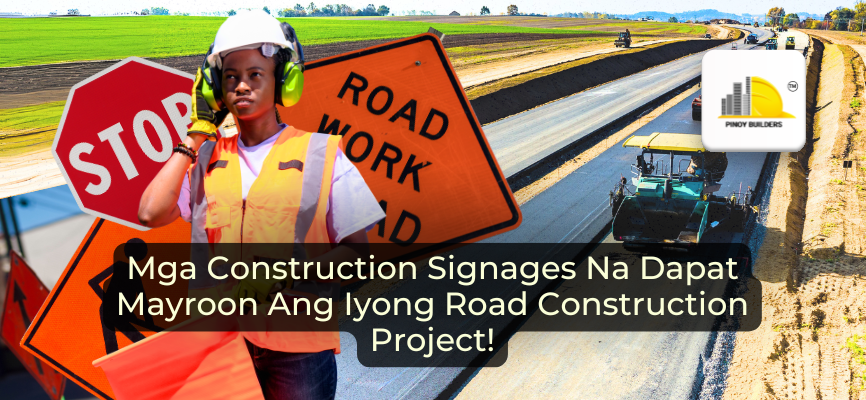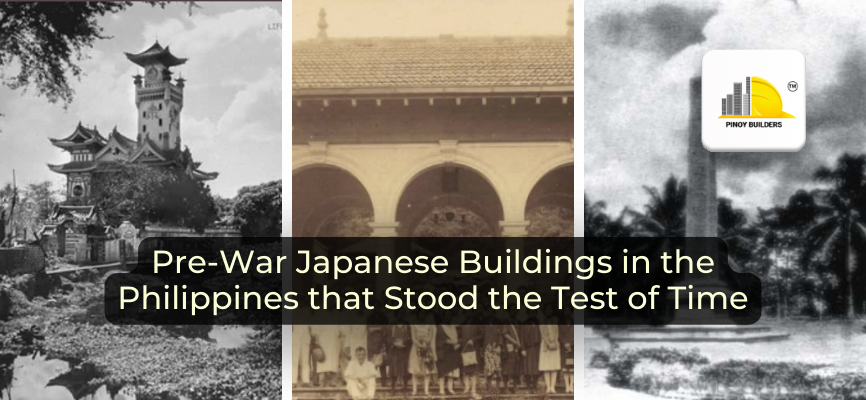Have you ever driven past a road construction site and felt unsure about where to go?
Missing or unclear signage can cause confusion, accidents, and even project delays. Road construction is a high-risk environment, with heavy machinery, active workers, and moving traffic all in one space. Without proper signage, both workers and motorists face serious risks.
Signage does more than just serve as a warning—it guides traffic, protects workers, and ensures a smooth project flow. Every road construction project needs clear, visible signs to keep everyone safe.
In this article, we’ll cover the essential construction signage your project must have and why it matters.
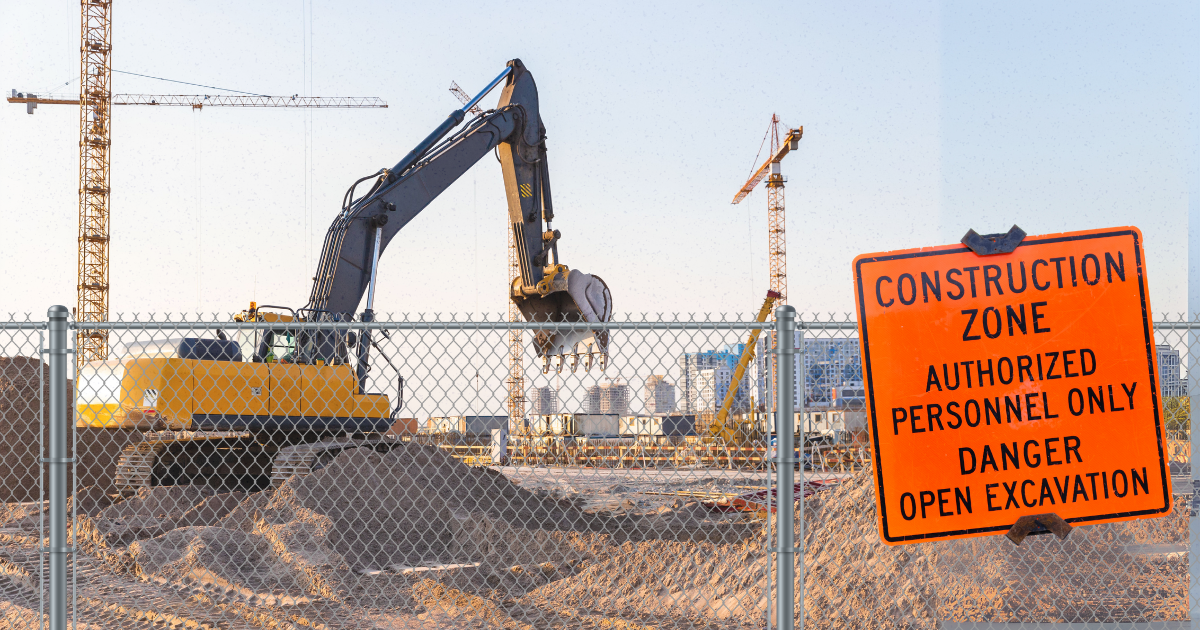
Types of Construction Signage and Their Meanings
Construction signage plays a crucial role in keeping workers, motorists, and pedestrians safe. It helps prevent accidents and maintain order on-site.
Here are the key types of construction signage and their meanings.
Danger signage (Warning of Extreme Hazards)
Danger signage indicates highly hazardous areas or situations within the construction site.
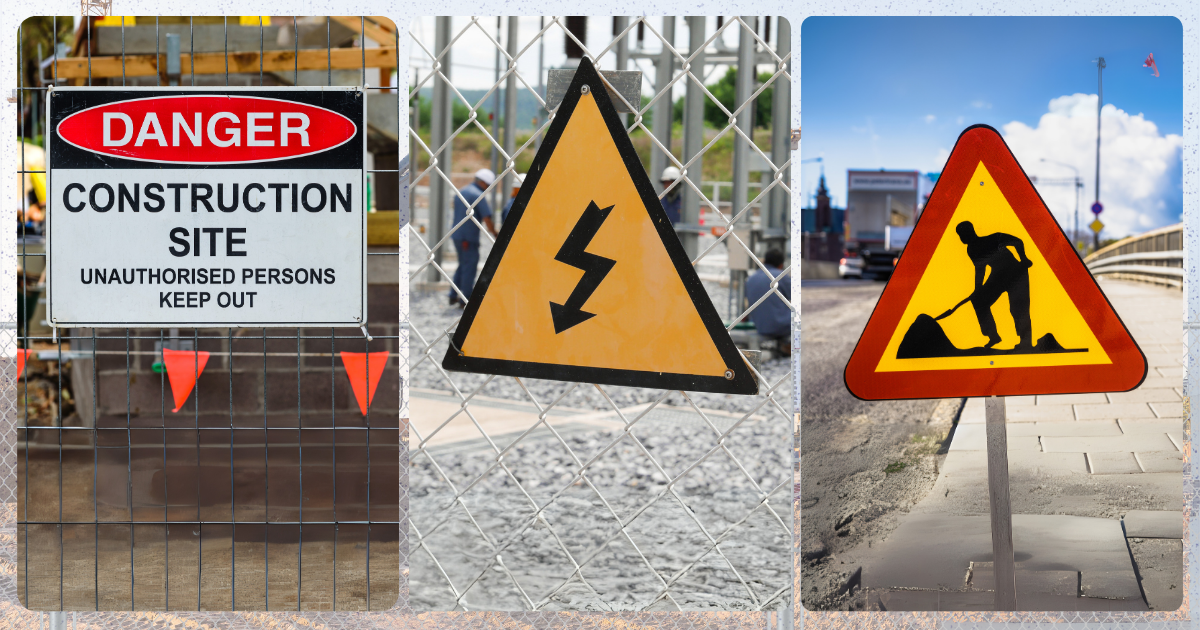
Pictured left to right:
- “Danger – Keep Out” – Warns that the area is extremely dangerous and should not be entered without permission.
- “High Voltage” – Alerts people of the presence of electricity, which could be fatal.
- “Men at Work” – Notifies passersby that there is ongoing road construction work and that they should be cautious.
Warning signage (Early Hazard Warnings)
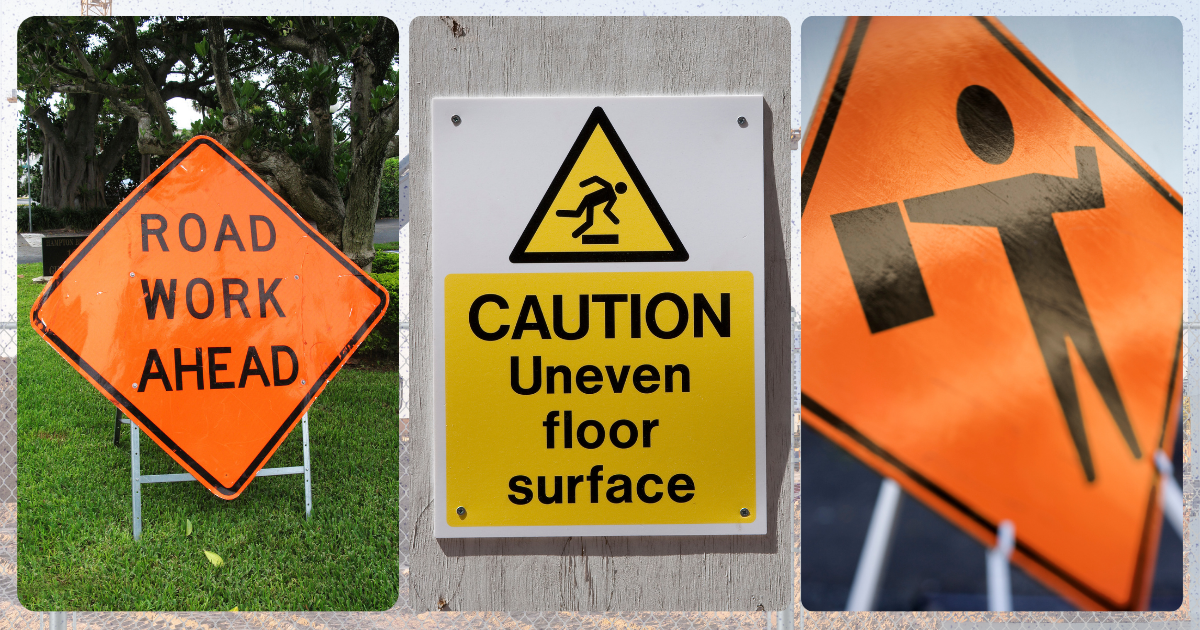
Pictured left to right:
Warning signage helps alert people about potential dangers ahead, giving them time to prepare.
- “Road Work Ahead” – Informs motorists about upcoming road construction so they can slow down or take alternate routes.
- “Uneven Surface” – Warns of rough or uneven roads that could lead to accidents.
- “Slow Down” – Reminds drivers to reduce speed to prevent mishaps.
Mandatory signage (Required for Safety Compliance)
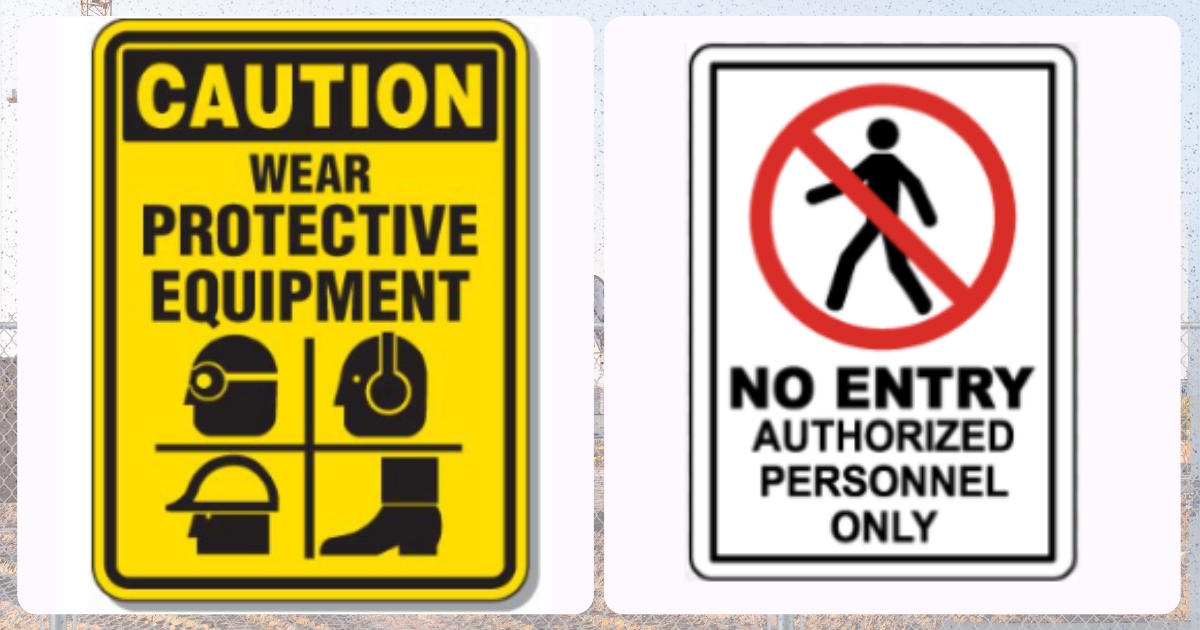
Pictured left to right:
Mandatory signage indicates rules that must be followed to ensure everyone’s safety.
- “Wear Safety Gear” – Reminds workers to wear helmets, vests, and other protective equipment.
- “No Unauthorized Personnel” – Restricts access to certain areas to maintain security.
Informational signage (General Construction Information)
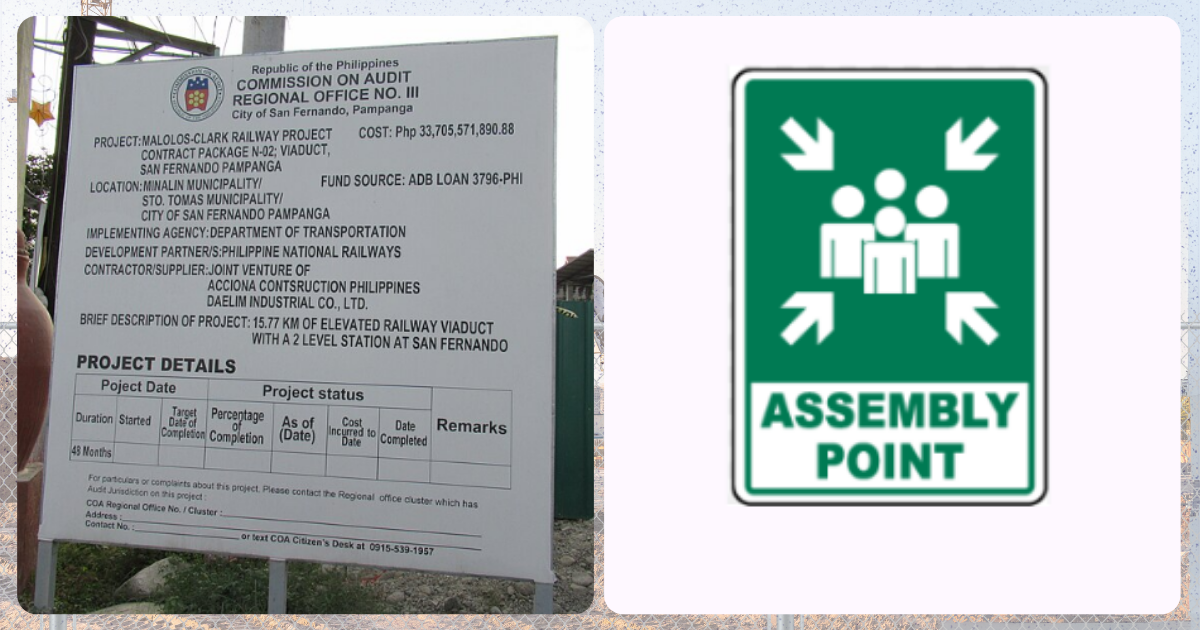
Image from Wikipedia Commons
Pictured left to right:
Informational signage provides essential details about the project and safety procedures.
- “Project Information Board” – Displays details about the project, including emergency contacts.
- “Exit” and “Emergency Assembly Area” – Guides people to safe areas during emergencies.
How Proper Signage Improves Construction Safety
Road construction comes with risks, from heavy machinery to ongoing traffic. Without proper signage, accidents can occur, and work may be disrupted. Using the right signs helps keep everyone safe and ensures the project runs smoothly.
- Reduces the risk of accidents by providing clear warnings.
- Improves traffic flow by giving motorists proper guidance.
- Protects workers and civilians by ensuring that safety measures are communicated effectively.
- Facilitates emergency response with clear exit signs and evacuation routes.
Is Your Project Equipped with the Right Signage?
Safety should never be overlooked in any construction project. Proper signage plays a crucial role in preventing accidents, maintaining order, and ensuring compliance with regulations.
Project managers and engineers must ensure that all necessary safety signage is in place to protect workers, motorists, and pedestrians. A well-organized signage system isn’t just a requirement—it’s a responsibility.
